Memories of the Spring Season
The
weeping cherry trees were very popular during the spring season. Betwe en
April 10 and 20, they could be seen in full bloom from the Reception pavilion
to the tunnel entrance and on as far as the promenade. The branches are still
very small, but as they grow each year there is no doubt that they will eventually
become a scenic highlight of the Shigaraki landscape. Particularly during
the museum's night hours when the cherry trees are softly illuminated and
the moon is full and bright, the approach to the museum takes on an otherworldly
ambience.
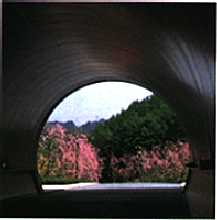
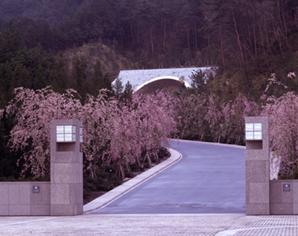
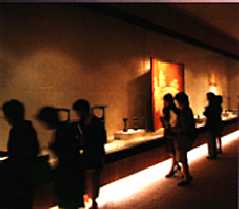
Results
of the Miho Museum Questionnaire
We
very much appreciate the great number of people who took time to comple te
our questionnaire during our Spring Season. Between the opening of the museum
in November, 1997 and June 10, 1998, over 65,000 people visited us. Of these,
one in every four returned one or more times and roughly 60% initially decided
to visit us because of recommendations or invitations from friends and acquaintances.
The suggestions offered in these questionnaires will
help us make the muse um an even more rewarding experience for our guests.
We hope that you will continue to offer your suggestions and support, and
we are thankful for the warm reception you have shown us.
Memories
of the Summer Season
The
46th Shigaraki Ceramics Festival
•July
24, 25, 26
The
46th Shigaraki Ceramics Festival took place over a period of three day s,
starting on July 24. The town of Shigaraki bustled with crowds of approximately
73,000 visitors, each enjoying the special events that were planned during
the festival and the opportunity to shop for the famed Shigaraki Ware. The
Miho Museum's free shuttle-bus service that ran between the museum and the
Shigaraki Ceramic Cultural Park, affording visitors splendid views of the
lush mountain forests, proved to be very popular.
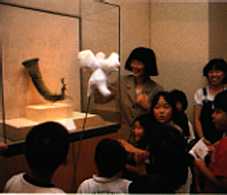
Lectures
for Children
•July
26, August 2, 9, 16
•For Elementary School, Junior High school, and Senior High-school students
"The
Cupid is so very nice." "It's so pleasant." "The boar's face in the H aniwa*
Room is funny." "I can't believe those artworks were made two or three thousand
years ago." "The little bird is beautiful and so pretty." "The standing Buddha
seems to gaze at me." "I know the rhytons were used for drinking." "I want
to come again." (Comments from the questionnaires given to the participants.)
The Miho Museum's first lecture series for children
proved to be both enjo yable and significant. The series was planned in coordination
with children's camp planners and school teachers.
The programs began with video presentations that told
the young people abo ut the various countries in which the artworks that are
displayed in the museum were produced, such as Egypt, West Asia, South Asia,
China, and Japan. Then the students participated in other activities such
as a picture-card show of the ancient temples of Egypt, drinking from rhytons,
hearing the story of Buddha, looking for bird motifs in various artworks,
and picking out their favorite Haniwa object from the Japanese Gallery. It
is our hope that this series will allow children to freely become aware of
the special character of each art object and engender in them an interest
in the arts. More programs are planned.
* Haniwa are ancient
Japanese clay figures.
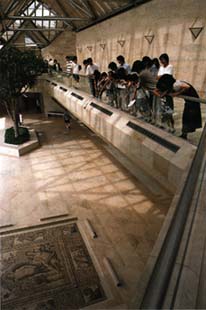
Lectures for children